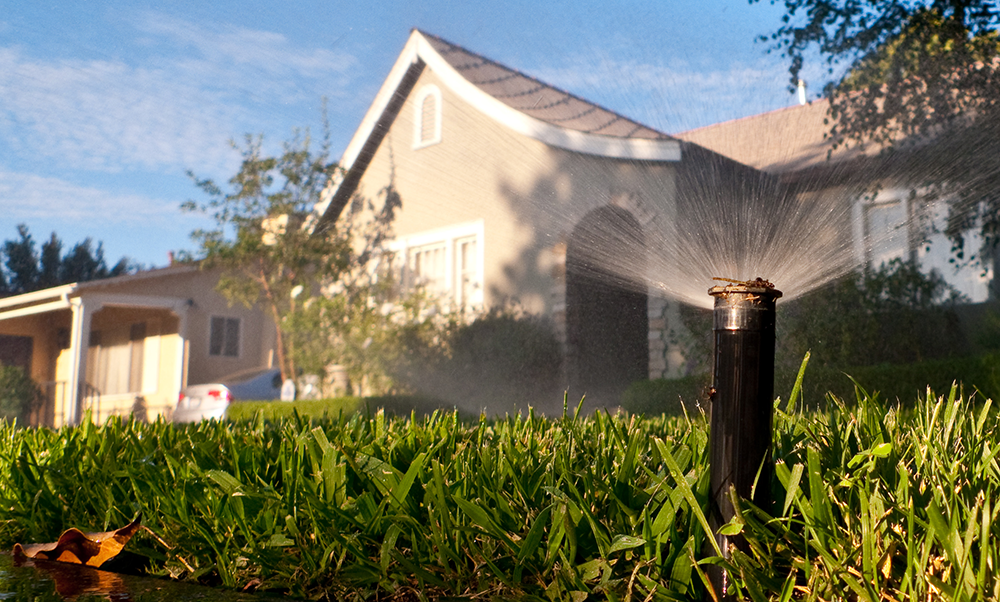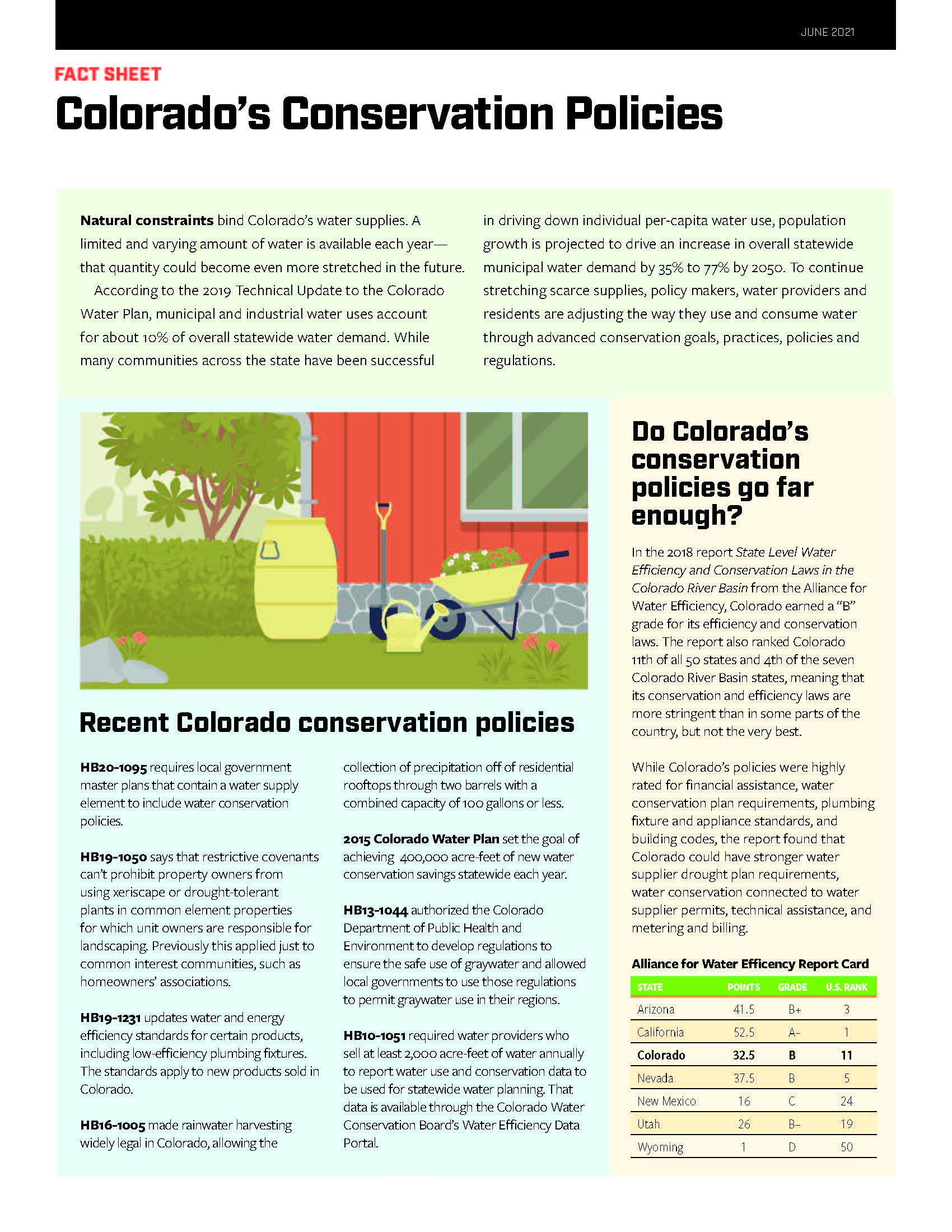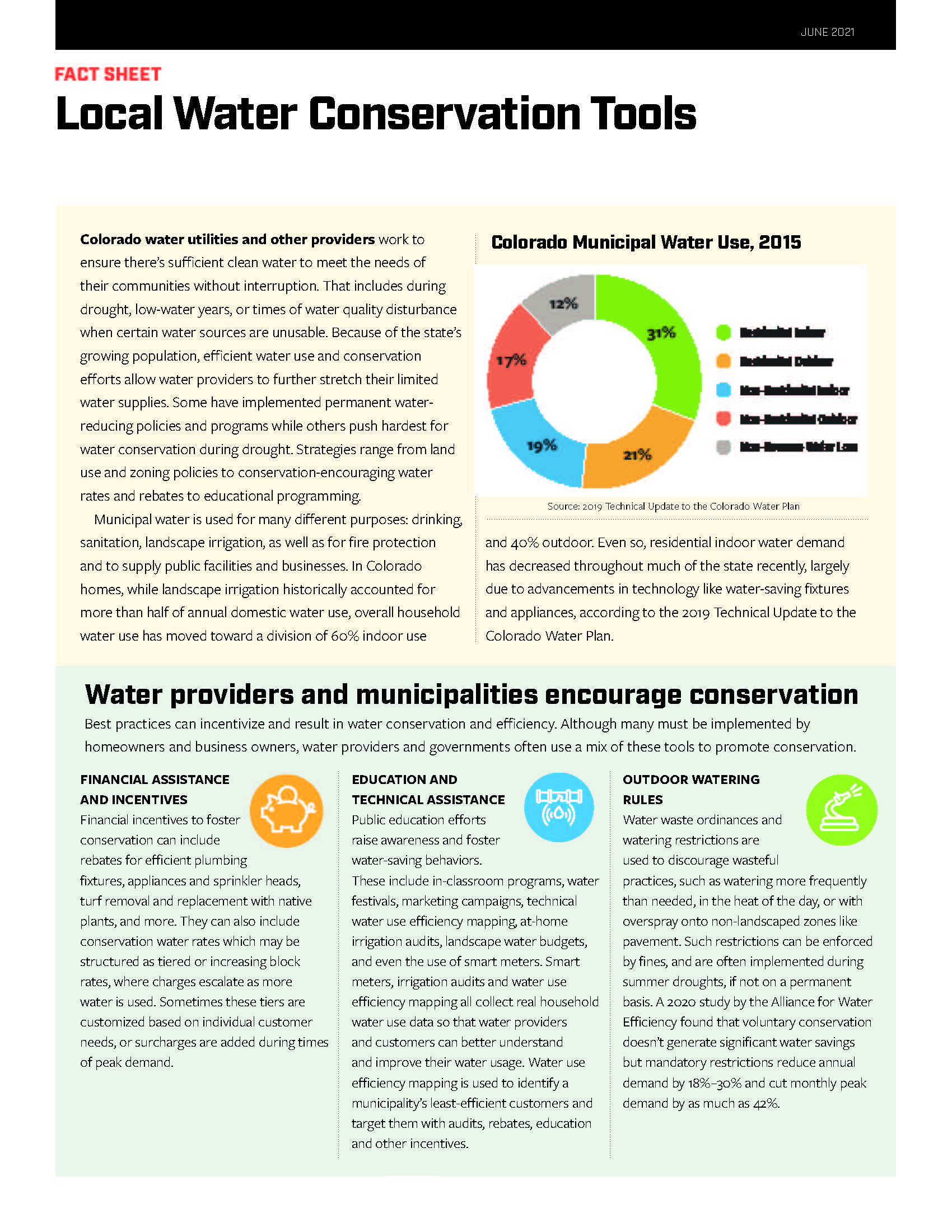We often take water for granted here in Colorado, but water isn’t an infinitely renewable resource. We’ll show you how switching showerheads inside your home and planting less thirsty plants in your yard (and some other things, too) can cut your water bill and help save our precious wet resource.
How to Save Water Inside Your Home
Buy Water-Efficient Products
Replace standard plumbing fixtures with newer, more water-efficient ones — this is one of the easiest and most effective ways to reduce water usage inside your home. The average family can save about 2,900 gallons of water a year by installing a single low-flow showerhead. Multiply that by two or three showers and the savings add up.
Toilets built before 1993 use up to 8 gallons of water per flush. Compare that to modern low-flow toilets, which use 1.28 gallons or less per flush.
As of 2016, retailers in Colorado are prohibited from selling low-efficiency plumbing fixtures per Senate Bill 14-103. A low-efficiency plumbing fixture is any product that hasn’t been tested and certified by the EPA’s WaterSense program. So, you can rest assured that any plumbing fixture you purchase in Colorado today will be water-efficient.
Many water providers will even reward you for using ultra low-flow products. For example, Denver Water offers rebates of up to $100 to homeowners who install toilets that use 1.1 gallons of water or less per flush. You can also earn up to a $75 rebate for using a WaterSense-labeled smart irrigation controller for your sprinklers.
Nip leaks in the bud. Pay close attention to your sinks, toilets, faucets, and pipes. If you suspect a leak, find and fix it immediately. Those tiny drops add up fast, sending gallons of wasted water — and your money — down the drain every year. According to the U.S. EPA, the average household’s leaks can account for nearly 10,000 gallons of water wasted every year and ten percent of homes have leaks that waste 90 gallons or more per day.
Change Your Habits
Ways to save water are staring you in the face from your bathroom mirror. Turn the water off while brushing your teeth, shaving, washing your hands.
When taking a shower, turn the water on only when you need to lather or rinse. While you’re running the water to let it warm up, collect it in a bucket and reuse it later to water plants or clean.
In the kitchen, let’s dish on one of the easy ways to cut your water usage.
The dishwasher wastes less water than washing by hand, but only if you only run it with a full load. Instead of rinsing off excess food, scrape the dishes directly into the trash can. When doing laundry, only use cold water, and only run full loads. Added bonus: You’ll also save on the electric bill.
How to Save Water Outside Your Home
Xeriscape Your Yard
Landscaping accounts for a good portion of water use—according to the 2019 Technical Update to the Colorado Water Plan, an average of about 38% of municipal water use in Colorado goes to meet outdoor residential and non-residential demands. Creating a landscape or xeriscape specifically for Colorado’s dry climate and educating yourself on the water needs of your plants and grasses can save you thousands of gallons of water each year.
Denver Water coined the term “xeriscape” to describe a landscape that uses as little water as possible. Xeriscapes feature a variety of native plants and drought-tolerant succulents. Xeriscapes also use hardscapes, such as gravel beds, pathways, patios, decks and mulch, to fill space in a landscape without creating more demand for water.
Strategic plant placement can save water, too. Place plants in the shade instead of full sun so they are less thirsty. Pro tip: Plants with high water needs should go in the low-lying parts of your lawn, where water pools naturally.
Water Wisely
Conserve water by knowing when and how much to water your lawn based on your plants’ needs and soil type. For example, sandy soils drain faster and need more frequent watering, while clay soils absorb water slowly and need less.
When to water? Most cities and counties in Colorado allow watering only before 10 a.m. or after 6 p.m. Here’s why: When you water in the hotter parts of the day, you lose a good portion of the moisture to evaporation. For 53% of Colorado’s major cities, these watering restrictions are permanent, the rest of the state either doesn’t have watering restrictions or only implements them during summer drought.
How else can you water wisely? Install sprinkler parts with the EPA’s WaterSense label, and include a rain sensor so your sprinklers don’t run when Mother Nature is doing the watering. Have an irrigation audit on your property to ensure you’re getting maximum efficiency out of your sprinkler system.
Change Your Outdoor Habits
Here are some of the ways you can save water when doing chores outside (by making a few changes):
- Don’t spray dirt and debris off surfaces like driveways, sidewalks, or porches – sweep them instead.
- Instead of washing your car by hand, consider using a car wash, where they recycle and treat the water they use. That way, you won’t send soapy water flowing into natural bodies of water and filling them with chemicals.
- Treated graywater — collected from the bath or shower — can be used to flush toilets and water your lawn and garden, where allowed. Here, in Colorado, graywater may captured and reused only in regions where local governments have adopted an ordinance approving its use.
- Go a step further, and capture the rainwater from your roof downspout in a rain barrel. State law now allows you to collect and store up to two barrels with a combined capacity of 110 gallons per household.
A Not So Free Flowing Resource
Keep in mind: The water that flows freely through your pipes and streams isn’t free. In Colorado, where we suffer from low reservoir levels, water is a limited resource. Conserving water is more important for us now than ever. More than 40% of the state is experiencing drought.
If we don’t learn how to save on water usage, we Coloradans could soon be paying a lot more to turn on the tap. The steps above should help you to stop wasting water and your money inside and outside your home.
Jordan Ardoin is a writer and plant enthusiast. She enjoys reading fantasy novels, cuddling with her bulldog, and collecting succulents (because they need little water and are hard for her to kill).
Hear more water conservation tips from expert Emily Hunt, the City of Thornton’s Water Resources Division manager.
and check out WEco’s fact sheets on water conservation:
To learn about more ways to save water, check out Porch’s article on lowering utility bills.




 Print
Print